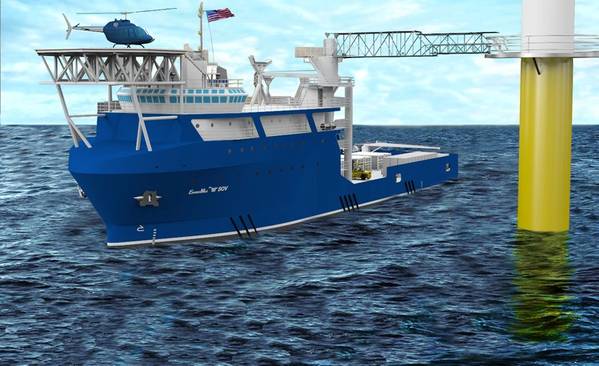
(Image: Technology Associates, Inc.)
The U.S. is going to need a fleet of Jones Act compliant vessels to serve its budding offshore wind industry. New Orleans-based Technology Associates, Inc. (TAI) said it has designed a range of EnviroMax diesel-electric hybrid service operation vessel (SOV) to support the installation and maintenance of offshore wind farms.
“Growth in the U.S. wind energy industry is inspiring,” said TAI President, Anil Raj PE, “and our TAI EnviroMax series of vessels are designed to be in sync with the environmentally sustainability objectives of U.S. wind power generation systems.”
Offered in “S” (small), “M” (medium) and “L” (large) classes, EnviroMax SOVs are designed for U.S.-flag operations, Jones Act compliant and have twin azimuthing propulsion power, and a hybrid diesel-electric plant. They are DP2, have retractable azimuthing bow thrusters, maximized mission spaces and more than 30 days of endurance. TAI SOVs have speeds up to 15 knots and hold position in high sea states and currents. These vessels are optimized for reduced motions and accelerations in all degrees of freedom. High freeboards ensure dry working decks. The telescopic, motion-compensated gangway can extend and is designed to reach 27 meters above sea level to maximize operation days. They have a high degree of crew safety and comfort.
The 264-foot, “M” class SOVs has a 58-foot beam, which provides a large working deck of ~5,400 square feet with storage for up to 30 pallets. The 3,800-square foot, below-deck warehouse space can support 16 TEU containers or the equivalent in pallets. A 3-D offshore knuckle boom crane is installed for cargo lifting. The “M” and “L” class vessels include a helicopter landing deck. The “M” class has accommodations for over 80 personnel, including a lounge, hospital, gym, training area and theater. Accommodations are in comfortable single person cabins for extended duration occupancy.
According to TAI, the EnviroMax series has been designed to maximize operational capabilities, minimize fuel consumption and carbon footprint. In addition to optimized operation, these designs offer unique features that reduce production costs.





No comments:
Post a Comment